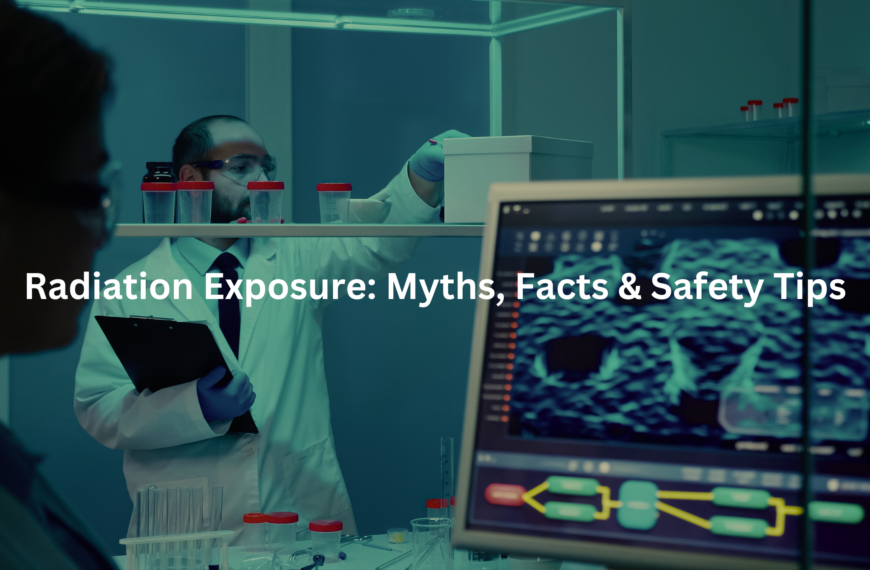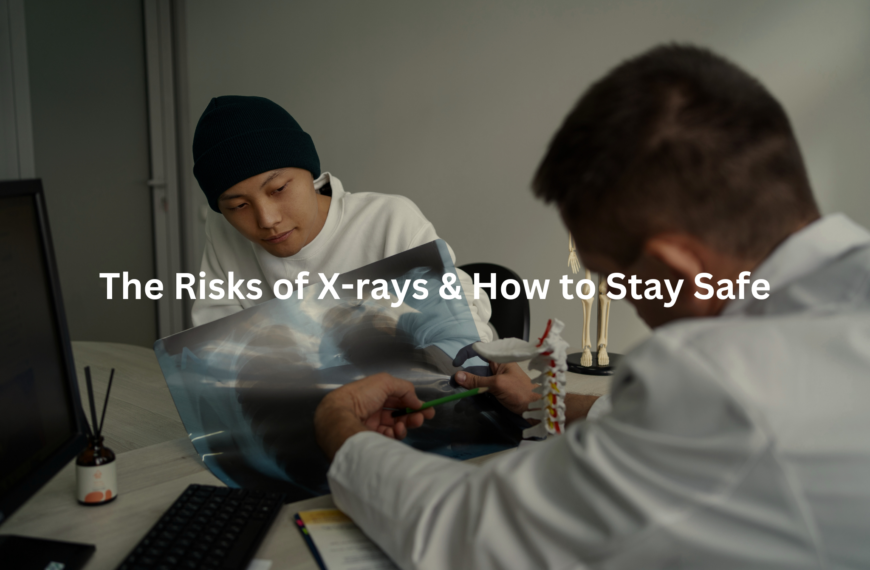Paediatric safety matters! Discover how to protect kids during medical imaging.
The first time a child needs medical imaging, it can be unsettling for everyone involved. A parent might worry about radiation exposure, while a young patient might only fear the unknown. Paediatric radiology isn’t only about making diagnoses. It’s about keeping children safe. Unlike adults, their bodies absorb more radiation per kilogram. So, every scan must be justified. Every dose calculated. And every precaution taken.
Key Takeaway
- Kids are extra sensitive to radiation, so doctors use special safety rules.
- There are different types of imaging that can be safer for children.
- Preparation and communication can help kids feel less scared during imaging.
Paediatric Radiology
Paediatric radiology is a specialised field focusing on imaging techniques for infants, children, and adolescents. This includes X-rays, computed tomography (CT) scans, magnetic resonance imaging (MRI), and ultrasound. Unlike adults, children need unique imaging protocols—adjustments to radiation doses, child-friendly environments, and often, different imaging modalities altogether.
In Australia, radiologists follow the “ALARA” principle (as low as reasonably achievable) to limit radiation exposure. This means:
- Tailoring radiation doses based on age, weight, and clinical sign.
- Choosing non-ionising imaging first (ultrasound, MRI) when workable.
- Using shielding devices to protect radiosensitive organs.
- Optimising scan parameters to reduce unnecessary exposure.
The goal is to get clear images for diagnosis while keeping the risk as low as possible. Paediatric radiologists, radiographers, and medical physicists work together to follow strict safety guidelines. (1)
Child Safety in Imaging
Children need different imaging techniques than adults. Using a standard adult scan could expose them to too much radiation. That’s why paediatric imaging relies on tailored techniques to keep them safe.
Strategies include:
- Weight-based dose adjustments for CT scans.
- High-speed imaging to reduce motion blur and repeat scans.
- Lead shielding to protect reproductive organs and thyroid tissue.
- Paediatric-specific imaging equipment with optimised settings.
Beyond technology, communication matters. Child life specialists, trained in paediatric anxiety management, often assist during procedures. They use distraction techniques to help children stay still. Less movement means clearer images and fewer retakes.
Paediatric Radiation Protection
Radiation exposure in childhood carries a greater risk than in adulthood. Because children live longer, radiation exposure can add up over time, increasing their cancer risk later in life. That’s why strict radiation protection measures exist.
Key strategies include:
- Justification of imaging—only performing scans when absolutely necessary.
- Dose optimisation—using the lowest effective dose.
- Alternative imaging methods—prioritising ultrasound or MRI when applicable.
- Equipment calibration—ensuring machines deliver accurate doses.
Medical physicists play a crucial role, regularly testing equipment to maintain safety standards. Paediatric radiologists adjust imaging parameters in real-time, ensuring diagnostic clarity without unnecessary exposure. (2)
Sedation for Children
Some scans need a child to stay completely still, sometimes for a long time. Infants and young children, yet, often find this difficult. In such cases, sedation or anaesthesia might be required.
Types of sedation used in paediatric imaging:
- Minimal sedation (oral or intranasal medication)—keeps the child calm but awake.
- Moderate sedation—allows for drowsiness but preserves protective reflexes.
- General anaesthesia—used for complex scans requiring absolute stillness.
Anaesthetists and radiologists work together to ensure sedation safety. Continuous monitoring—oxygen levels, heart rate, and respiration—is standard practice.
Non-Ionising Imaging for Children
Credit: University Medical Imaging Toronto (UMIT)
Whenever possible, radiologists opt for non-ionising imaging. This means techniques that don’t involve radiation, such as:
- Ultrasound—ideal for soft tissues, newborn brain scans, and abdominal imaging.
- MRI—superior for neurological and musculoskeletal conditions.
Ultrasound is often the first choice for paediatric imaging due to its real-time capability and absence of ionising radiation. MRI, while radiation-free, can be challenging for younger children due to the need for prolonged stillness.
Preparation Tips for Kids
A well-prepared child is more likely to remain calm during an imaging test. Some simple yet effective ways to prepare children include:
- Explaining the procedure in simple terms—avoiding medical jargon.
- Using picture books or videos—to show what will happen.
- Bringing a comfort item—like a favourite toy or blanket.
- Practising deep breathing exercises—to reduce anxiety.
Parents play a key role. Their reassurance can significantly impact a child’s cooperation. Some hospitals let parents stay with their child during the scan, which can help the child feel more at ease.
Child-Friendly Imaging Techniques
Paediatric imaging environments are designed to be less intimidating. Many hospitals use:
- Colourful decor and themed imaging rooms—spaceships, jungles, or underwater themes.
- Entertainment systems—cartoons or music during scans.
- Interactive play areas—to engage children before the procedure.
- Mock scanners—allowing kids to practice before the real scan.
These small adjustments reduce anxiety and improve scan outcomes. (3)
Safe Imaging for Infants
Imaging newborns presents unique challenges. Their bodies are tiny, making positioning crucial. Their inability to stay still increases motion artefacts.
To ensure safe imaging:
- Minimal radiation doses are used for X-rays.
- High-frequency ultrasound probes capture fine details.
- Soft immobilisation devices gently keep babies still.
- Parent-assisted comfort techniques help reduce stress.
Every detail matters when imaging an infant. Even a slight movement can require a retake, so careful handling is critical.
Managing Child Anxiety
Medical imaging can be frightening for children. Dimly lit rooms, large machines, and unfamiliar sounds contribute to their anxiety.
Techniques for reducing stress include:
- Parental presence—allowing a caregiver to stay close.
- Child-friendly explanations—using simple, reassuring language.
- Music or distractions—headphones with favourite songs.
- Positive reinforcement—praising cooperation.
When a child is calm, they are more likely to stay still, which helps produce clearer images and reduces the need for repeat scans.
Paediatric Imaging Myths
Misinformation about paediatric imaging is common. Some myths include:
- “All imaging exposes kids to harmful radiation.” Not true—ultrasound and MRI use no radiation.
- “Sedation is dangerous.” When administered by trained professionals, sedation is safe and carefully monitored.
- “Medical imaging is painful.” Most scans are completely painless—except for minor discomfort from positioning.
Parents should talk to paediatric radiologists to learn about the risks and benefits of each imaging test. Having clear and accurate information can ease unnecessary worries and help ensure children get the right care. (4)
FAQ
How is pediatric radiation safety ensured during medical imaging?
Paediatric radiation safety follows strict guidelines to keep exposure as low as possible. The ALARA principle (As Low As Reasonably Achievable) helps limit ionising radiation while still capturing clear images. To reduce unnecessary exposure, hospitals use well-calibrated imaging equipment, dose monitoring programs, and shielding devices.
Specialised paediatric radiology facilities also follow specific imaging protocols to keep children safe while maintaining high standards for image quality and accuracy.
Why are children more sensitive to radiation than adults?
Children are more sensitive to radiation because their cells are still growing and dividing quickly. This makes them more at risk of radiation-related health issues, including cancer. To keep them safe, paediatric radiology standards set strict limits on X-ray exposure, and paediatric CT scans use special techniques to lower radiation levels while still capturing clear images. Cumulative radiation dose assessment is important to track lifetime exposure.
What steps are taken to optimise radiation dose in pediatric imaging?
Radiation dose optimization is a key focus in pediatric patient care. Health professional training ensures clinical sign assessments are done before ordering a scan. Safety checklists in medical imaging help avoid unnecessary scans. Adjusting the distance of the X-ray tube and using alternative imaging methods, like ultrasound for children and MRI safety protocols, also help reduce exposure to ionising radiation.
How do imaging facilities ensure pediatric radiology meets safety standards?
Imaging facility accreditation standards need strict compliance with radiation protection guidelines. A radiation safety officer oversees imaging quality assurance, ensuring imaging equipment calibration is done regularly. Regulatory compliance in radiology means international radiation safety standards are followed. Research on pediatric radiation effects also informs best practices for improving safety.
What role do medical physicists play in pediatric imaging safety?
Medical physicist involvement is crucial in dose monitoring programs and imaging equipment calibration. They help implement fluoroscopy safety measures, ensure diagnostic imaging safety, and educate healthcare teams on radiation risk communication. They also work with different specialists in imaging care to make sure children are positioned correctly and kept still during scans. This helps get clear images the first time, reducing the need for repeat scans.
How can parents be involved in making imaging decisions for their child?
Parental involvement in imaging decisions is encouraged to ensure informed choices about diagnostic imaging safety. Radiation exposure education helps families understand the risk-benefit analysis in diagnostics. Communication in radiology teams ensures ethical considerations in pediatric radiology are addressed. Emergency radiation consultations are available for urgent concerns about imaging safety.
What measures prevent unnecessary repeat imaging in children?
To avoid unnecessary repeat scans, hospitals use imaging safety checklists and focus on patient-centred care in radiology. Assessing how radiation affects children helps ensure the lowest possible doses are used. Exposure reduction techniques, like collimation and shielding devices, also help limit radiation. Community awareness programs educate healthcare providers on the best ways to reduce radiation risks and keep children safe during imaging.7
Conclusion
To wrap up, paediatric safety in imaging is all about protecting kids while they get the care they need. By following proper protocols and clear communication, we can keep kids safe and comfortable during scans. Parents should ask questions and stay involved in their child’s care. The main goal is always to protect children, and paediatric radiology offers many ways to do that.
References
- https://www.iaea.org/resources/rpop/health-professionals/radiology/children
- https://www.radiologyinfo.org/en/info/safety-rad-children
- https://pmc.ncbi.nlm.nih.gov/articles/PMC3132617/
- https://www.sciencedirect.com/science/article/pii/S0820593009601961/pdf?md5=6e792ea817245cb41d9e821ab4f59aa4&pid=1-s2.0-S0820593009601961-main.pdf



